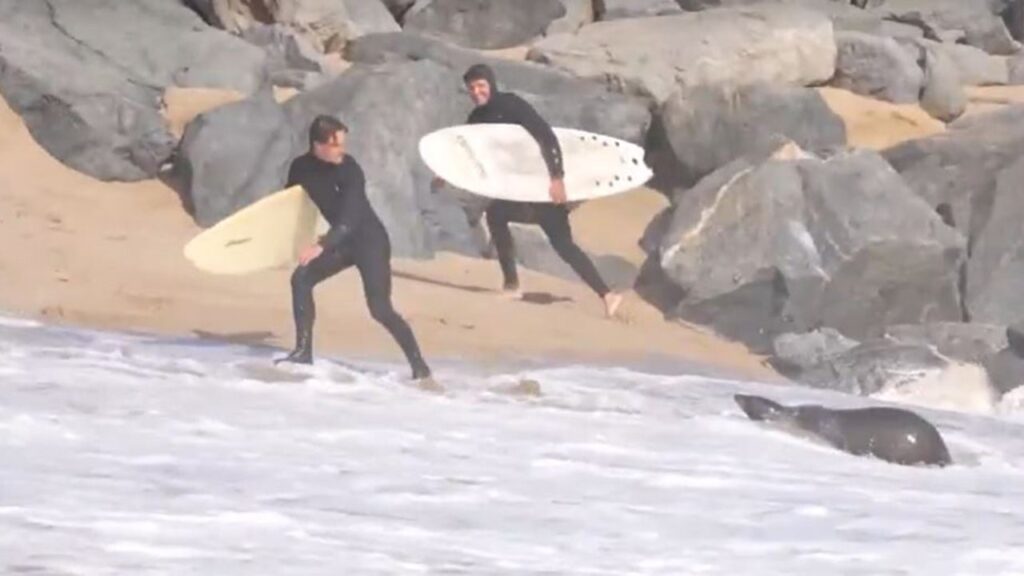In a shocking incident this week, an aggressive sea lion caused panic among surfers at a beach after it repeatedly lunged at them and even ventured onto the shore. Footage captured during the episode illustrates the alarming behavior of this marine mammal, which left onlookers both frightened and confused. The aggression displayed by the sea lion can be attributed to an alarming increase in domoic acid levels in its system, a neurotoxin that has emerged as a consequence of a massive toxic algae bloom affecting the waters in the vicinity. According to experts, this condition can severely impact marine mammals’ brains, leading to heightened aggression and erratic behavior, as reported by FOX 11.
Domoic acid is a potent toxin produced by certain species of algae, and its prevalence has surged in recent years. Thousands of sea lions and other aquatic lifeforms have been adversely affected, resulting in multiple fatalities among dolphins and at least two whale deaths. John Warner, the CEO of Marine Mammal Care Center, lamented the growing frequency and intensity of these toxic events, stating, “These domoic acid events are getting bigger and worse and more frequent. That’s horrifying. How long can all of these species take this type of abuse and still be with us? That’s the question, and I don’t know the answer to that.”
The effects of toxic algae blooms extend beyond domoic acid; these phenomena also produce Saxitoxin, which causes a severe condition known as paralytic shellfish poisoning. This particular toxin further disorients marine animals, potentially leading to permanent brain injury and increased aggression levels. The consequences of this toxicity are dire, resulting in an array of health issues for affected sea life. In the reported case, the ill-fated sea lion was ultimately euthanized after it was determined that its condition was too severe for recovery.
Despite the grim outcomes for many animals affected by the toxic algae, there is optimism that some individuals can recover if the toxicity is detected early. Warner emphasized the struggles faced by these creatures, explaining, “They’re getting thrown at them, some of the worst things they could possibly experience, and they’re not feeling well.” This underscores the urgent need for intervention and research aimed at mitigating these adverse environmental impacts.
This is not an isolated incident; last summer, an alarming encounter occurred at La Jolla Beach in San Diego County, where another pair of sea lions were filmed charging at unsuspecting beachgoers. Such aggressive acts from marine animals are often seen during their breeding season, adding layers of complexity to their behavior. The rising number of sea lions at popular spots like California’s famous piers has reached a 15-year high, signifying a booming population but also spotlighting the accompanying dangers posed by their aggressive displays, particularly when under the influence of toxic substances.
As toxic algae blooms become increasingly frequent and severe, wildlife experts are sounding alarm bells regarding the ongoing plight of marine life. The health of these creatures is intricately tied to the ecosystem’s overall welfare, raising concerns about environmental stability and sustainability. Each toxic episode not only threatens individual species but also has ripple effects on the biodiversity of the marine environment. Efforts to monitor and respond to these algae blooms remain essential, alongside advocating for cleaner oceanic conditions to protect both wildlife and human interests.



